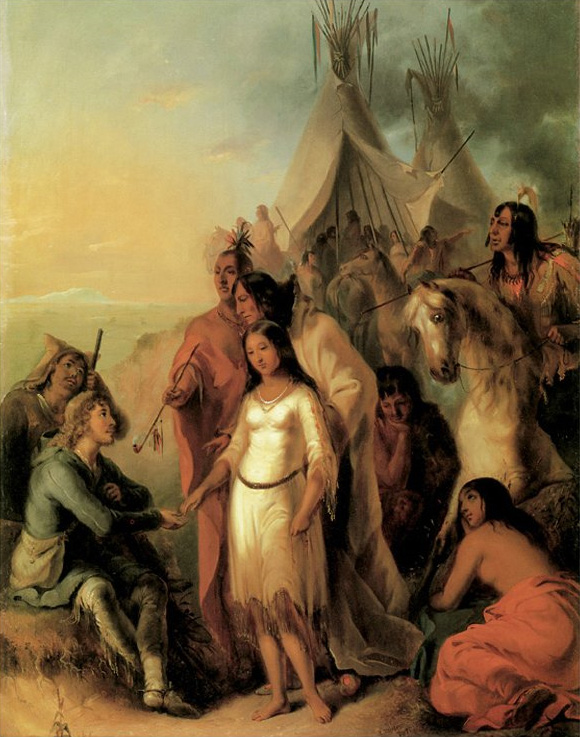The
Gitchigumee Territory has a long and odd story in American history. Located as it is on the north shore of
Lake Superior (indeed, 'Gitchigumee' itself means 'Big Water' and is an American Indian term for the Lake it abuts), it is a long strip of the great north that developed through two major historical forces; fur trapping and relocation of 'Uncivilized' Indians.
Even in colonial times, the lands around the Great Lakes were prime fur areas, with both the
Hudson Bay Company and the
North West (later Northwest) Company vying for control of the area (until the Hudson Bay Company essentially lost the battle). A network of trappers and traders developed in the region, connecting northern Indian tribes with white trappers and traders, many of whom intermarried and their descendants, the
Métis, became the dominant force in trading in the Lakes Region. As wildlife become more scarce and settlers moved in to the more southern regions around the Great Lakes, the Métis traders either moved on or settled down themselves, but the poor soil and harsher weather of the north shore of Lake Superior acted as a barrier against such change, especially with the vast north of the Hudson Territory just beyond to continue to provide furs for trade. These predominantly Francophone Métis would play an important role in the future of the Gitchigumee.
While many natives of the USA east of the Mississippi eventually accepted assimilation and joined more or less the mainstream of American society, intermarrying with settlers of European extraction, some refused to conform to American 'civilization' and instead were forced to relocate by America's military,
the Legion. At first, only a few tribes were moved to the far north, while most were moved west, predominantly west of the Mississippi. However, it soon became US policy to resettle all tribes to the Hudson Territory in the far north, including those who had previously been removed to West of the Mississippi if they would not accept American ways. The land that formed the Gitchigumee was not officially part of the Hudson Territory given it drained into Lake Superior rather than
Hudson Bay, and so originally was part of the old
Northwest Territory. Instead of being a settlement for Indian Tribes, the Gitchigumee became a weystation between the rest of the United States and the tribes of the Hudson Territory. Some Indians did choose to stay in the Gitchigumee, those who at the last moment regretted their decision to accept exile in the far north. Those who did go on to the Hudson Territory faced long, fierce winters, but were free to practice their way of life without interference from the Americans to the South, and could bring some of civilization's comforts to their people through continued fur trade with the Métis of the Gitchigumee (and to a lesser extent, hardy Quebeckers along the border). This trade kept the Gitchigumee a viable economy, supplemented by fishing on Lake Superior and dairy farming later, as well as money from the Federal Government for working as Indian Agents. Indeed, the entire administration of the Hudson Territory was run out of the Gitchigumee Territory.
Gitchigumee Territory and Lake Superior:
